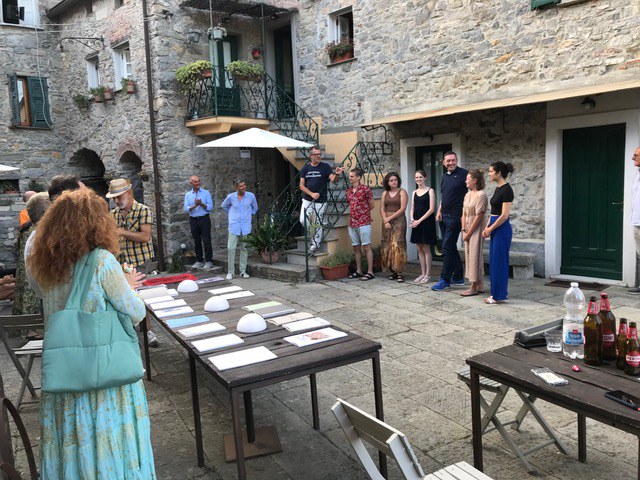The title of the studio refers to the particular panoramic dimension of this place in the Ligurian hinterland, located on the wooded slopes of the Unesco area of the Cinque Terre, an area that is both vast and concentrated at the same time.
The idea was to start from a double exoticism: on the one hand, for the students, the confrontation with an unknown but suggestive place, on the other hand, for the 20 inhabitants of Castè, the exchange of opinions with the unexpected ideas brought by the students of the University of Liechtenstein.
In March 2023, the students spent a week in this Ligurian village and came into direct contact with the events and people. After getting to know the urban building types (clustered volumes, solitary blocks, temporary houses), they examined the typical building materials (stone, lime, chestnut wood, slate) and engaged in an intensive exchange with the residents about the different ways and desires of living, working and dwelling.
The approach and design process consisted of several phases:
- Exploration of situations, structures and ways of living.
- Analysis of the constructed architectural narratives.
- Invention from the inventory of existing material and immaterial aspects.
The built narratives of Castè were interpreted by rethinking the existing and adding unexpected aspects and new meanings. On this basis, new possible uses were conceived that open up for future developments. Questions of function, context, construction, language and time were reflected upon, integrated and translated into architectural proposals.
The projects developed by the students during the semester were presented in Castè as part of an open-air exhibition, which opened in the village's public spaces on July 22.
On September 2, a jury of local architects, landscape architects, artists, historians and writers selected the best projects in four categories: originality, feasibility, sustainability and integration. The prize for each of the projects was a work of art created by four artists related to the project sites.







